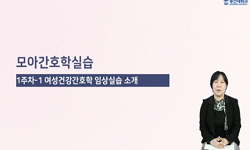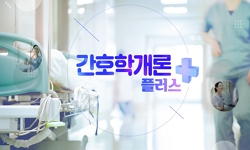Laparoscopic surgery leaves less scarring and less pain after surgery, and has cosmetic advantages. In addition, it has the advantages of fast recovery after surgery, short hospitalization period, and quick return to social life. For this reason, lapa...
http://chineseinput.net/에서 pinyin(병음)방식으로 중국어를 변환할 수 있습니다.
변환된 중국어를 복사하여 사용하시면 됩니다.
- 中文 을 입력하시려면 zhongwen을 입력하시고 space를누르시면됩니다.
- 北京 을 입력하시려면 beijing을 입력하시고 space를 누르시면 됩니다.
복강경 수술 환자의 수술 전 정서적 상태와 수술 후 통증 관계 = Relationship between preoperative emotional state and postoperative pain in laparoscopic surgery patients
한글로보기https://www.riss.kr/link?id=T16030850
- 저자
-
발행사항
서울 : 한양대학교 임상간호대학원, 2022
-
학위논문사항
학위논문(석사) -- 한양대학교 임상간호대학원 , 임상간호전공 , 2022. 2
-
발행연도
2022
-
작성언어
한국어
- 주제어
-
발행국(도시)
서울
-
형태사항
viii, 64 p. : 삽도 ; 26 cm.
-
일반주기명
부록 수록
권두 국문요지, 권말 Abstract 수록
지도교수: 신용순
참고문헌: p. 43-50 -
UCI식별코드
I804:11062-200000592834
- 소장기관
-
0
상세조회 -
0
다운로드
부가정보
다국어 초록 (Multilingual Abstract)
Laparoscopic surgery leaves less scarring and less pain after surgery, and has cosmetic advantages. In addition, it has the advantages of fast recovery after surgery, short hospitalization period, and quick return to social life. For this reason, laparoscopic surgery has been rapidly applied to surgical operations since the 1990s and has been operated in many fields for 30 years. However, despite the many advantages, the pain persists for 2 to 3 days when carbon dioxide injected into the abdominal cavity during the process of forming ups and downs to secure the field of vision during surgery remains in the abdominal cavity, and the pain can cause various negative results. Therefore, it is necessary to manage the pain, which is also deeply related to the emotional state of the patient. A patient's emotional state before surgery, such as anxiety or depression, affects the patient's status after surgery, and anxiety reduction promotes recovery after surgery and reduces side effects. Therefore, this study was attempted to find out the emotional state before surgery by analyzing the relationship between the patient's emotional state and post-operative pain for laparoscopic surgery patients. This study is a descriptive correlation research study. The subjects of this study were 92 patients who were hospitalized at University C Hospital in Seoul and underwent laparoscopic surgery under general anesthesia. Data were collected from November 03, 2020 to April 10, 2021. The emotional state before surgery was measured on the hospital anxiety-depression scale, and the postoperative pain was measured on the numeric pain scale. The collected data used SPSS statistics program. The results of this study are as follows. ∙ For the subjects, the proportion of women was 65.2%, which was higher than that of men, and the average age wa 44.2±12.4, and 65.2% of married people were married. In terms of educational background, 66.3% had a college degree or higher, and the ratio of religion presence or absence was confirmed to be 50%, respectively. The most common diagnosis was cholelithiasis 55.4%, and the non-use of analgesic during surgery was 87%, the average operation time was 62.2 (±17.48) minutes, and the average amount of anesthetic was 141.3 (±17.0) mg. ∙ The mean preoperative pain was 2.14(±1.91), the mean of anxiety before surgery was 5.10(±2.91), and the mean of depression was 5.60(±2.81). The average postoperative pain was 4.91±1.81 points. Immediately after surgery, total abdominal pain wa 50%, shoulder pain was 4.3%, 6 hours after surgery, total abdominal pain was 35.9%, shoulder pain wa 25%, and 12 hours after surgery, total abdominal pain was 43.5%. , 18.5% of shoulder pain, 52.5% of the entire abdomen and 9.8% of shoulder pain after 24 hours after the operation. ∙ There was no difference in postoperative pain according to the preoperative emotional states of anxiety (t=.306, p=.763) and depression (t=-,524 p=.602). ∙ As a result of the correlation analysis between preoperative emotional state and postoperative pain, postoperative pain was determined by age (r=.33, p=.002), and analgesic use when necessary in the post-operative ward (r=.354, p=.003), wa found to have a significant correlation with operation time (r=.21, p=.041), anesthetic usage (r=.29, p=.005), and residence time in the recovery room (r=-.23, p=.031) showed a negative (-) correlation. According to the results of this study, shoulder pain occurred due to the nature of laparoscopic surgery using relief agents, and despite the laparoscopic surgery, postoperative pain wa at a level that required management. Therefore, there is a need to develop a pain management nursing intervention ba ed on understanding the characteristics of pain after laparoscopic surgery
국문 초록 (Abstract)
그러나 많은 장점에도 불구하고 수술 시 시야 확보를 위해 기복을 형성하는 과정 중 복강 내로 주입하는 이산화탄소가 복강 내에 남아있는 2〜3일까지 통증이 지속되고, 통증으로 인하여 다양한 부정적인 결과를 유발할 수 있기 때문에 통증에 대한 관리가 필요하며, 이는 환자의 정서적 상태와도 깊은 관련이 있다.
불안이나 우울과 같은 수술 전 환자의 정서적 상태는 수술 후 환자 상태에 영향을 주고, 불안 감소는 수술 후 회복을 증진시키며 부작용도 감소시킨다. 이에 본 연구는 복강경 수술 환자를 대상으로 수술 전 환자의 정서적 상태와 수술 후 통증의 관계를 분석하여 수술 전 정서적 상태가 수술 알아보기 위해 시도 되었다. 본 연구는 서술적 상관관계 조사연구로 연구대상은 서울소재 C대학병원에 입원하여 전신마취 하에 복강경 수술을 받는 환자 92명을 대상으로 2020년 11월 03일부터 2021년 4월 10일까지 자료수집 하였고, 수술 전 정서적 상태는 병원 불안-우울척도, 수술 후 통증은 숫자통증척도로 측정하였다. 수집된 자료는 SPSS통계 프로그램을 사용하였다.
연구 결과는 다음과 같다.
∙ 대상자는 여성의 비율이 65.2%로 남성의 비율보다 높게 나타났고, 나이는 평균 44.2±12.4, 결혼 여부는 기혼이 65.2%로 나타났다. 학력에서는 대졸이상이 66.3%로 나타났고, 종교 유·무의 비율은 각각 50%로 확인되었다. 진단명은 담석증이 55.4%로 가장 높게 나타났고, 수술 중 진통제 미사용은 87%, 수술시간은 평균 62.2(±17.48)분, 마취제량 투여는 평균 141.3(±17.0)mg로 나타났다.
∙ 수술 전 통증 평균은 2.14(±1.91), 수술 전 정서 상태 중 불안 평균 5.10(±2.91), 우울 평균 5.60(±2.81)으로 나타났다. 수술 후 통증은 평균 4.91±1.81점이었다. 수술 직후에는 복부전체 통증이 50%, 어깨통증이 4.3%, 수술 후 6시간이 경과된 시점에서는 복부전체가 35.9%, 어깨통증이 25%, 수술 후 12시간 경과시점에서는 복부전체 통증이 43.5%, 어깨 통증이 18.5%, 수술 후 24시간 경과 후에는 복부전체가 52.5%, 어깨통증은 9.8%였다.
∙ 수술 전 정서적 상태인 불안 (t=.306, p=.763)과 우울(t=-,524 p=.602)에 따른 수술 후 통증의 차이가 없었다.
∙ 수술 전 정서 상태와 수술 후 통증과의 상관관계 분석 결과 수술 후 통증은 나이(r=.33, p=.002), 수술 후 병동에서 필요시 진통제 사용량(r=.354, p=.003), 수술시간(r=.21, p=.041), 마취제 사용량(r=.29, p=.005)과 유의한 상관관계가 있는 것으로 나타났고, 회복실 체류시간(r=-.23, p=.031)은 음(-)의 상관관계가 있는 것으로 나타났다.
본 연구결과에서도 복강경 수술이 기복제를 넣는 특성 때문에 어깨 통증이 발생하며, 복강경 수술임에도 불구하고 수술 후 통증은 관리가 필요한 수준이었다. 따라서 복강경 수술 후 통증의 특성에 대한 이해를 기반으로 한 통증 관리 간호 중재가 개발될 필요가 있다.
복강경 수술은 수술 후 흉터가 적게 남고 통증이 적으며, 미용상의 이점이 있다. 또한 수술 후 회복이 빠르고, 입원기간이 짧으며 빠른 시간 내에 사회생활로의 복귀가 가능하다는 장점을 가...
복강경 수술은 수술 후 흉터가 적게 남고 통증이 적으며, 미용상의 이점이 있다. 또한 수술 후 회복이 빠르고, 입원기간이 짧으며 빠른 시간 내에 사회생활로의 복귀가 가능하다는 장점을 가지고 있다. 이러한 이유로 복강경 수술은 1990년대 이후 빠르게 외과 수술에 적용되어 30년 간 많은 분야에서 수술이 진행되고 있으며, 복강경적 담낭절제술은 2013년 10,763건에서 2019년 13,828건으로 2013년부터 2019년까지 3,065건 증가되었다.
그러나 많은 장점에도 불구하고 수술 시 시야 확보를 위해 기복을 형성하는 과정 중 복강 내로 주입하는 이산화탄소가 복강 내에 남아있는 2〜3일까지 통증이 지속되고, 통증으로 인하여 다양한 부정적인 결과를 유발할 수 있기 때문에 통증에 대한 관리가 필요하며, 이는 환자의 정서적 상태와도 깊은 관련이 있다.
불안이나 우울과 같은 수술 전 환자의 정서적 상태는 수술 후 환자 상태에 영향을 주고, 불안 감소는 수술 후 회복을 증진시키며 부작용도 감소시킨다. 이에 본 연구는 복강경 수술 환자를 대상으로 수술 전 환자의 정서적 상태와 수술 후 통증의 관계를 분석하여 수술 전 정서적 상태가 수술 알아보기 위해 시도 되었다. 본 연구는 서술적 상관관계 조사연구로 연구대상은 서울소재 C대학병원에 입원하여 전신마취 하에 복강경 수술을 받는 환자 92명을 대상으로 2020년 11월 03일부터 2021년 4월 10일까지 자료수집 하였고, 수술 전 정서적 상태는 병원 불안-우울척도, 수술 후 통증은 숫자통증척도로 측정하였다. 수집된 자료는 SPSS통계 프로그램을 사용하였다.
연구 결과는 다음과 같다.
∙ 대상자는 여성의 비율이 65.2%로 남성의 비율보다 높게 나타났고, 나이는 평균 44.2±12.4, 결혼 여부는 기혼이 65.2%로 나타났다. 학력에서는 대졸이상이 66.3%로 나타났고, 종교 유·무의 비율은 각각 50%로 확인되었다. 진단명은 담석증이 55.4%로 가장 높게 나타났고, 수술 중 진통제 미사용은 87%, 수술시간은 평균 62.2(±17.48)분, 마취제량 투여는 평균 141.3(±17.0)mg로 나타났다.
∙ 수술 전 통증 평균은 2.14(±1.91), 수술 전 정서 상태 중 불안 평균 5.10(±2.91), 우울 평균 5.60(±2.81)으로 나타났다. 수술 후 통증은 평균 4.91±1.81점이었다. 수술 직후에는 복부전체 통증이 50%, 어깨통증이 4.3%, 수술 후 6시간이 경과된 시점에서는 복부전체가 35.9%, 어깨통증이 25%, 수술 후 12시간 경과시점에서는 복부전체 통증이 43.5%, 어깨 통증이 18.5%, 수술 후 24시간 경과 후에는 복부전체가 52.5%, 어깨통증은 9.8%였다.
∙ 수술 전 정서적 상태인 불안 (t=.306, p=.763)과 우울(t=-,524 p=.602)에 따른 수술 후 통증의 차이가 없었다.
∙ 수술 전 정서 상태와 수술 후 통증과의 상관관계 분석 결과 수술 후 통증은 나이(r=.33, p=.002), 수술 후 병동에서 필요시 진통제 사용량(r=.354, p=.003), 수술시간(r=.21, p=.041), 마취제 사용량(r=.29, p=.005)과 유의한 상관관계가 있는 것으로 나타났고, 회복실 체류시간(r=-.23, p=.031)은 음(-)의 상관관계가 있는 것으로 나타났다.
본 연구결과에서도 복강경 수술이 기복제를 넣는 특성 때문에 어깨 통증이 발생하며, 복강경 수술임에도 불구하고 수술 후 통증은 관리가 필요한 수준이었다. 따라서 복강경 수술 후 통증의 특성에 대한 이해를 기반으로 한 통증 관리 간호 중재가 개발될 필요가 있다.
목차 (Table of Contents)
- Ⅰ. 서론 1
- 1. 연구의 필요성 1
- 2. 연구목적 5
- 3. 용어의 정의 6
- Ⅱ. 문헌고찰 8
- Ⅰ. 서론 1
- 1. 연구의 필요성 1
- 2. 연구목적 5
- 3. 용어의 정의 6
- Ⅱ. 문헌고찰 8
- 1. 복강경 수술과 수술 후 통증 8
- 2. 수술 전 환자의 정서적 상태와 통증 10
- Ⅲ. 연구방법 14
- 1. 연구설계 14
- 2. 연구대상 14
- 3. 연구 측정도구 16
- 4. 자료수집 19
- 5. 윤리적 고려 20
- 6. 자료분석 21
- Ⅳ. 연구결과 22
- 1. 대상자의 특성 22
- 2. 복강경 수술 전 정서적 상태와 수술 후 통증 25
- 3. 대상자의 특성에 따른 수술 후 통증 29
- 4. 수술 전 정서 상태에 따른 수술 후 통증의 차이 33
- 5. 대상자의 특성과 수술 전 정서상태, 수술 후 통증과의 상관관계 34
- Ⅴ. 논의 36
- Ⅵ. 결론 및 제언 41
- 1. 결론 41
- 2. 제언 42
- 참고 문헌 43
- 부록 51
- 기관생명윤리위원회통지서 51
- 연구도구 사용 승인서 52
- 동의서 53
- 설문지 57
- Abstract 61
- 연구윤리서약서 65












